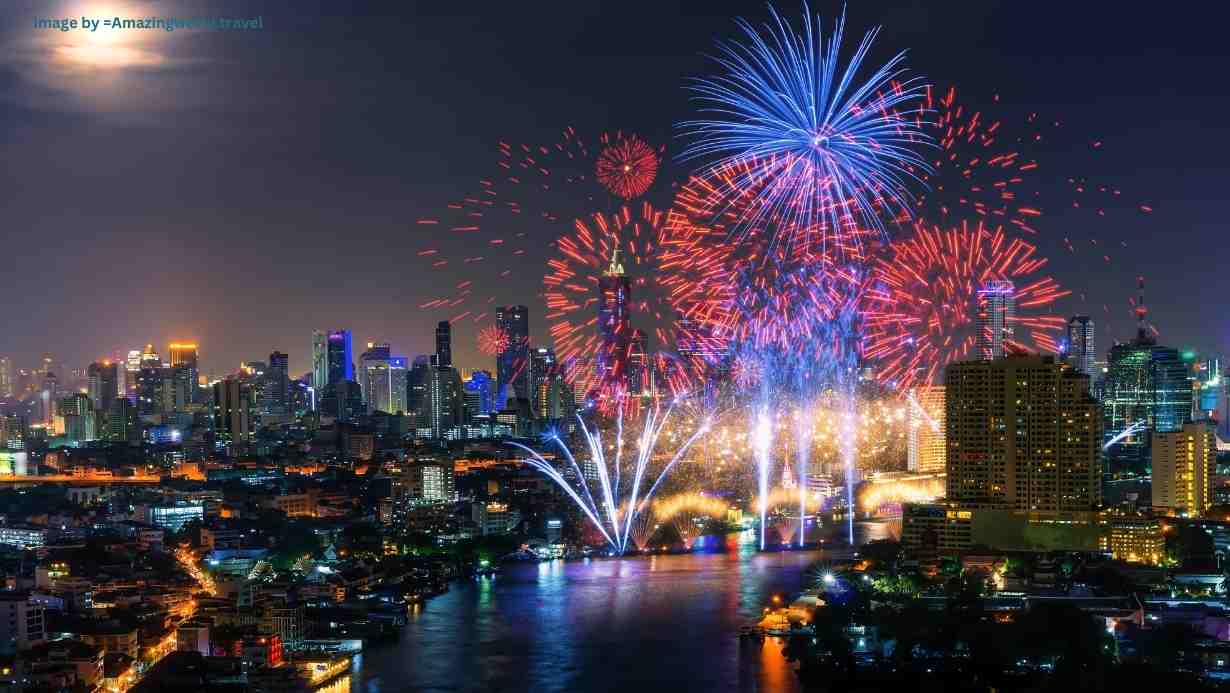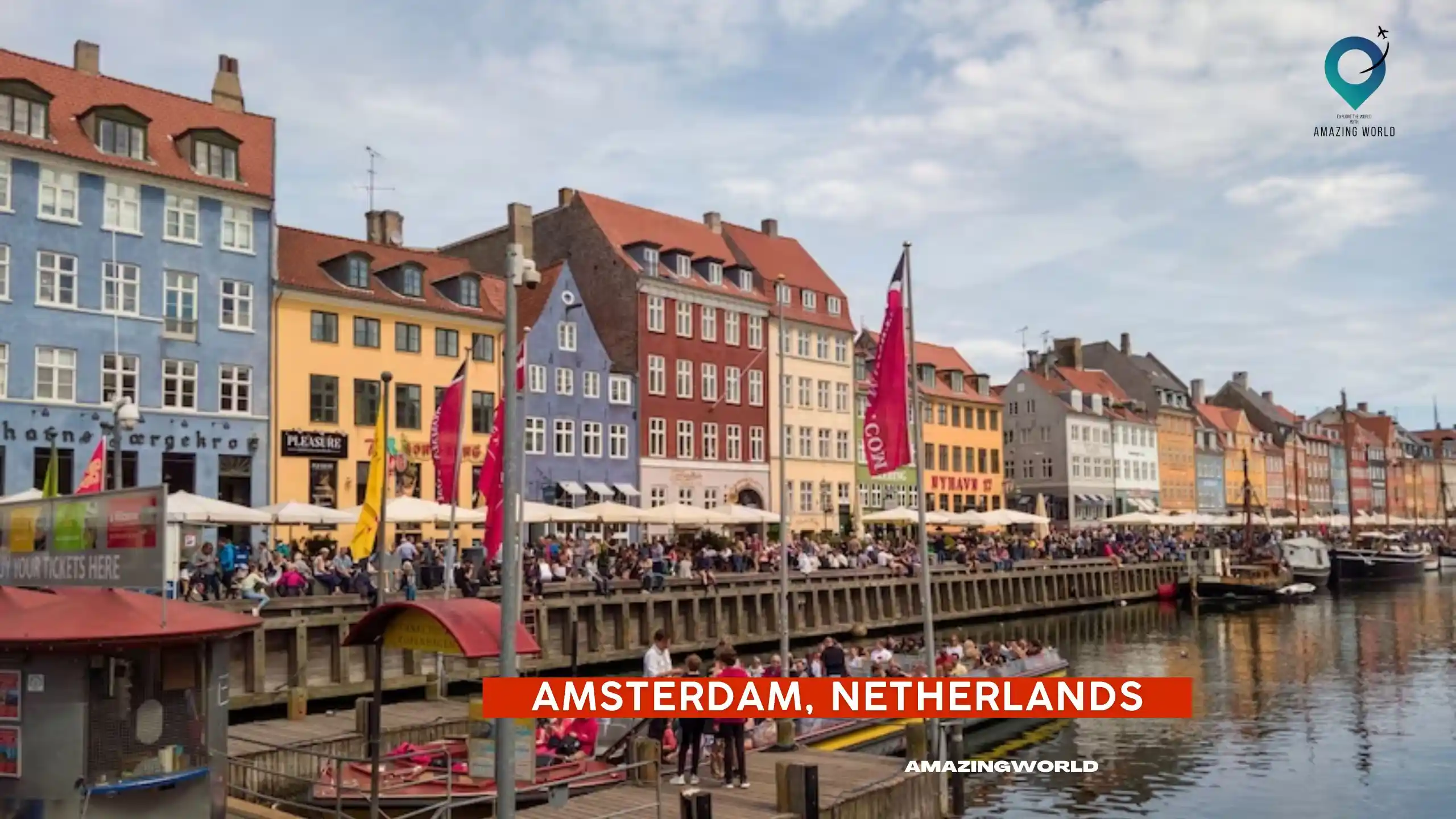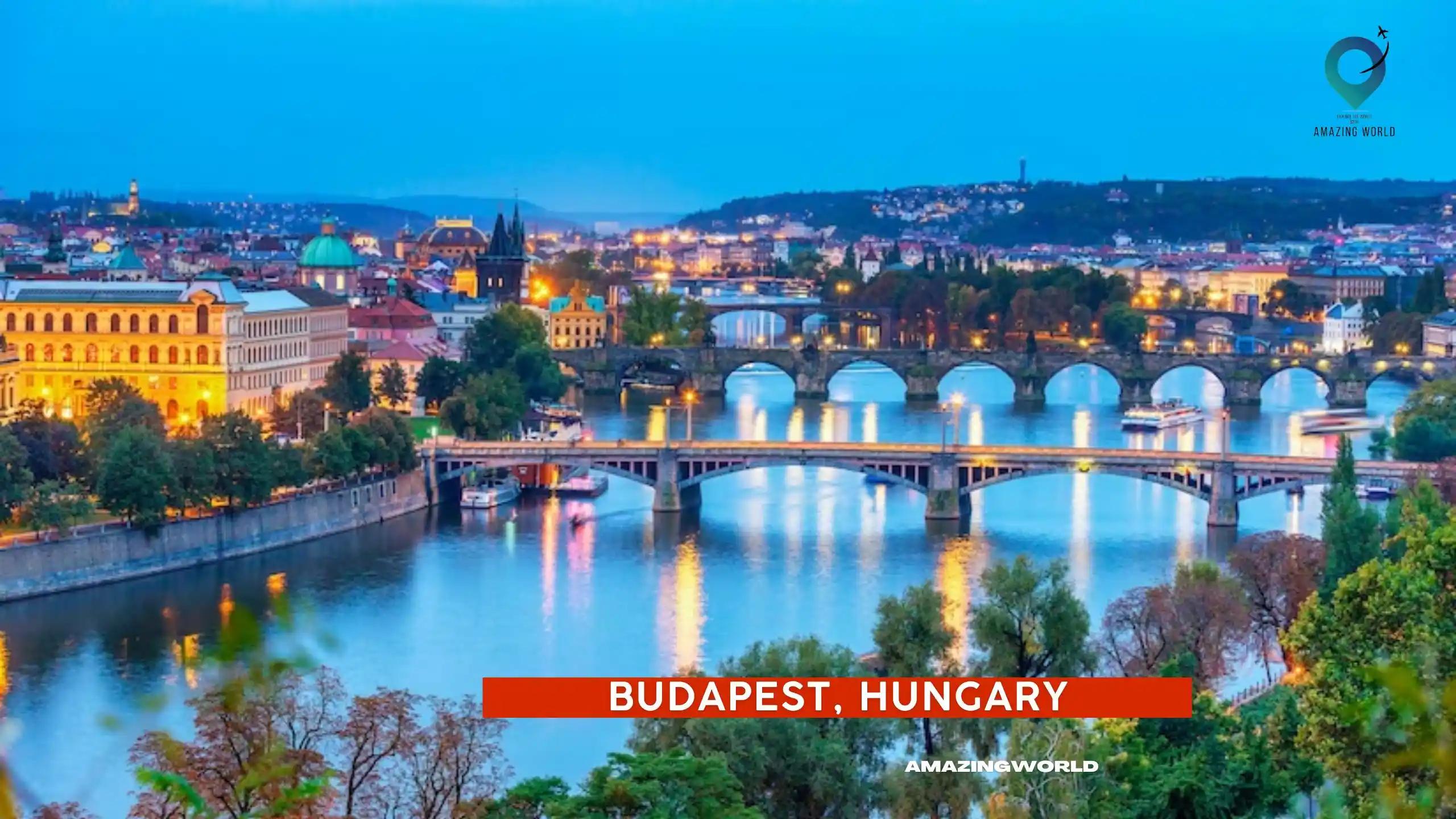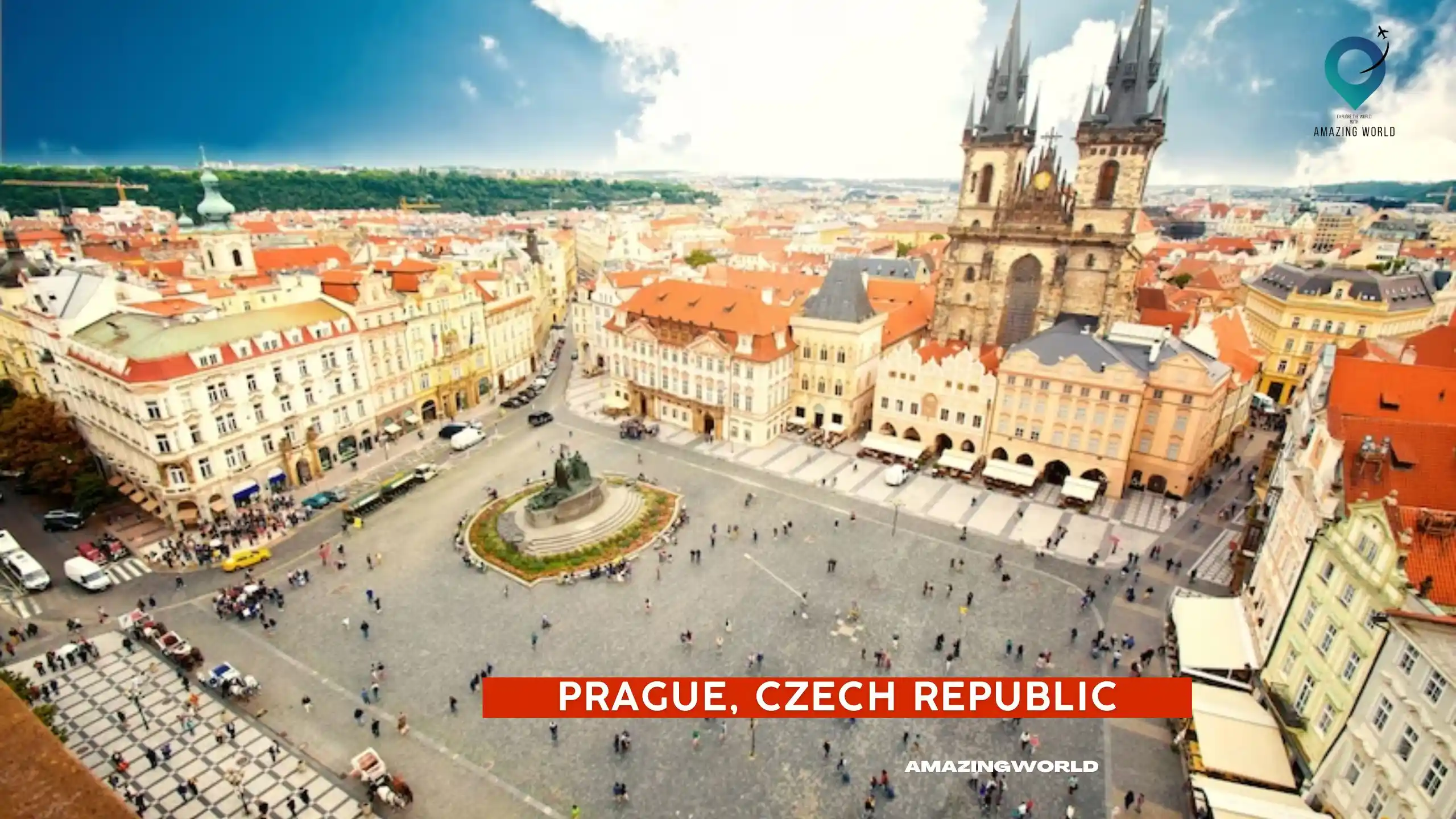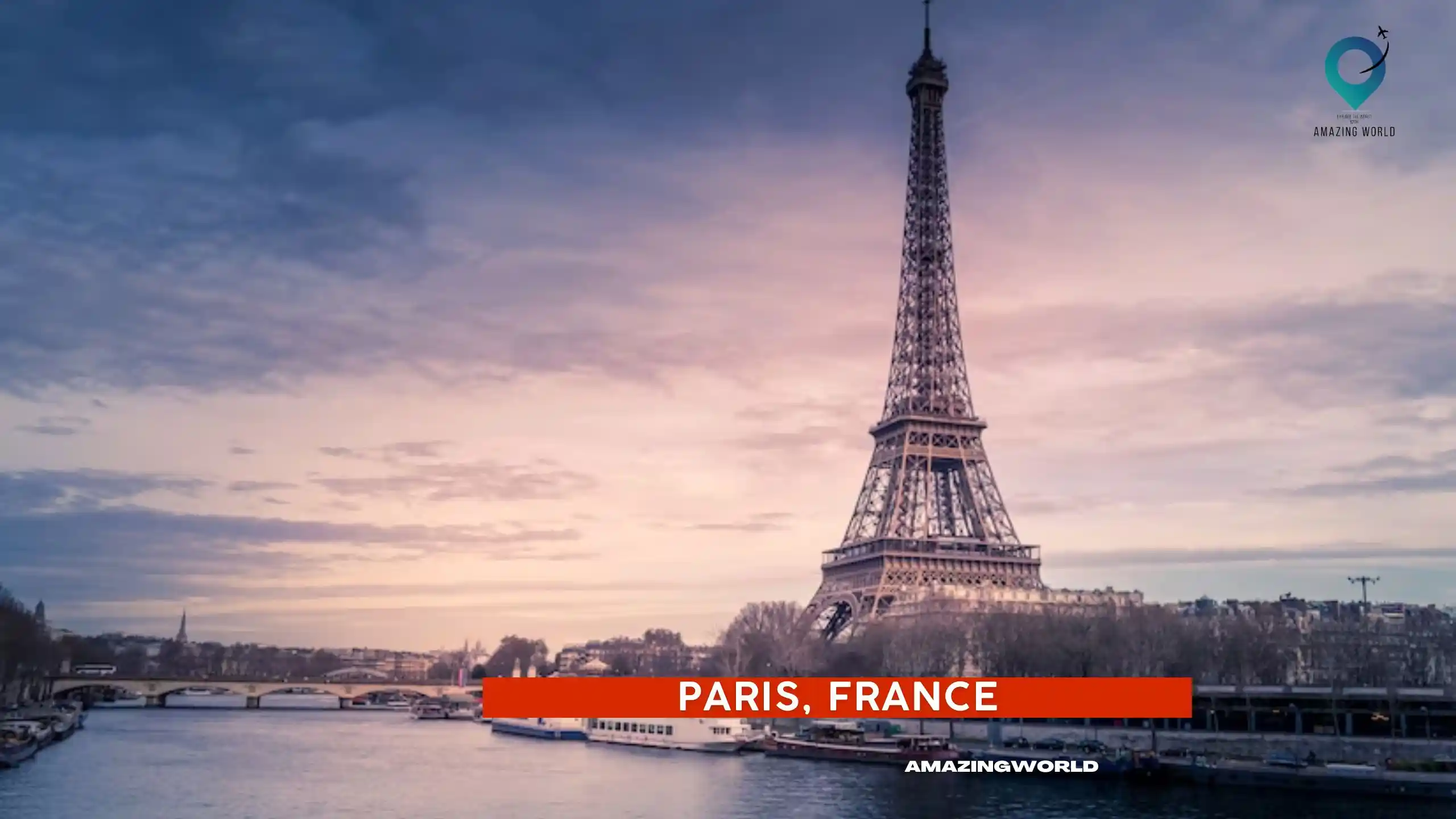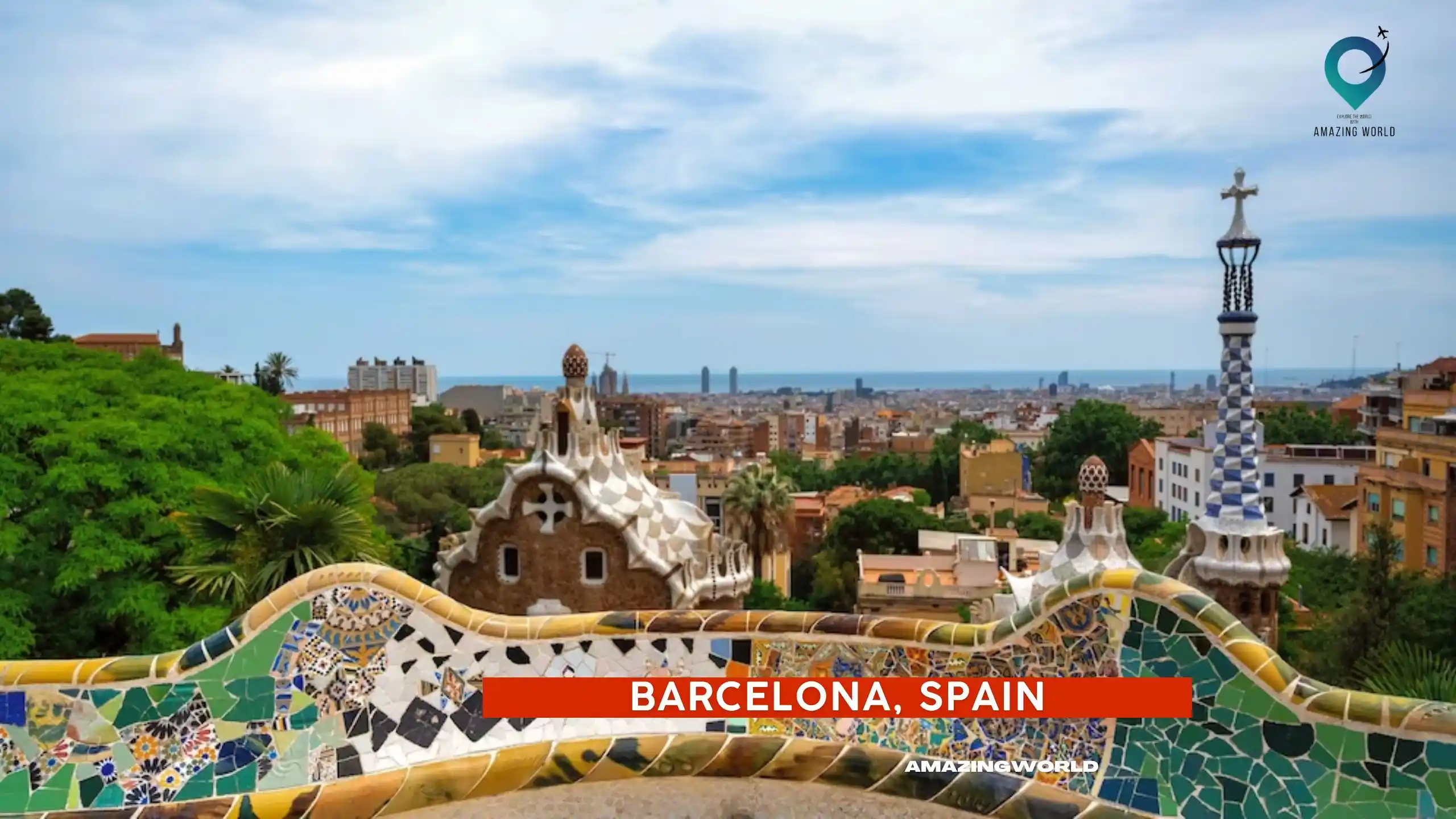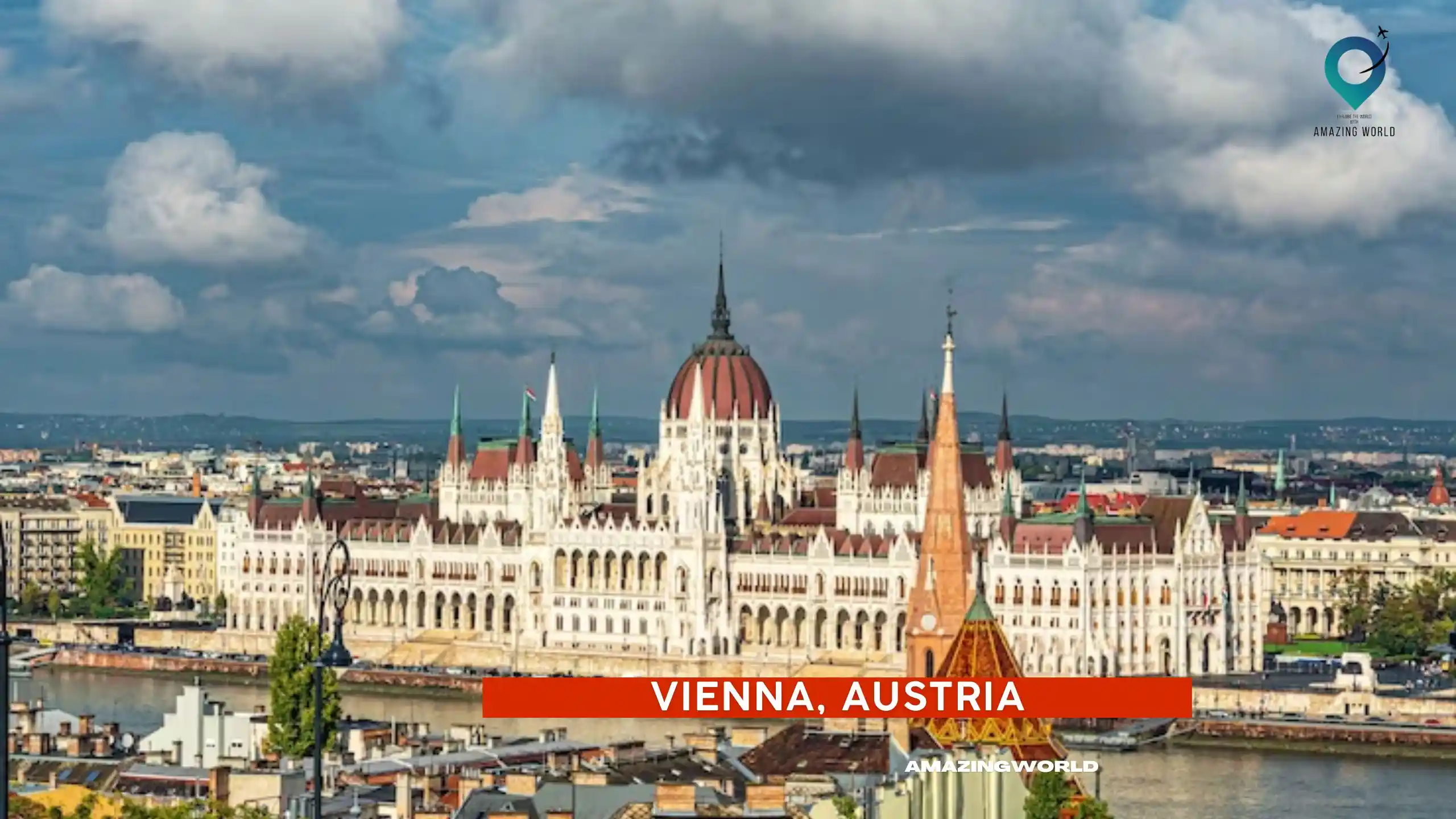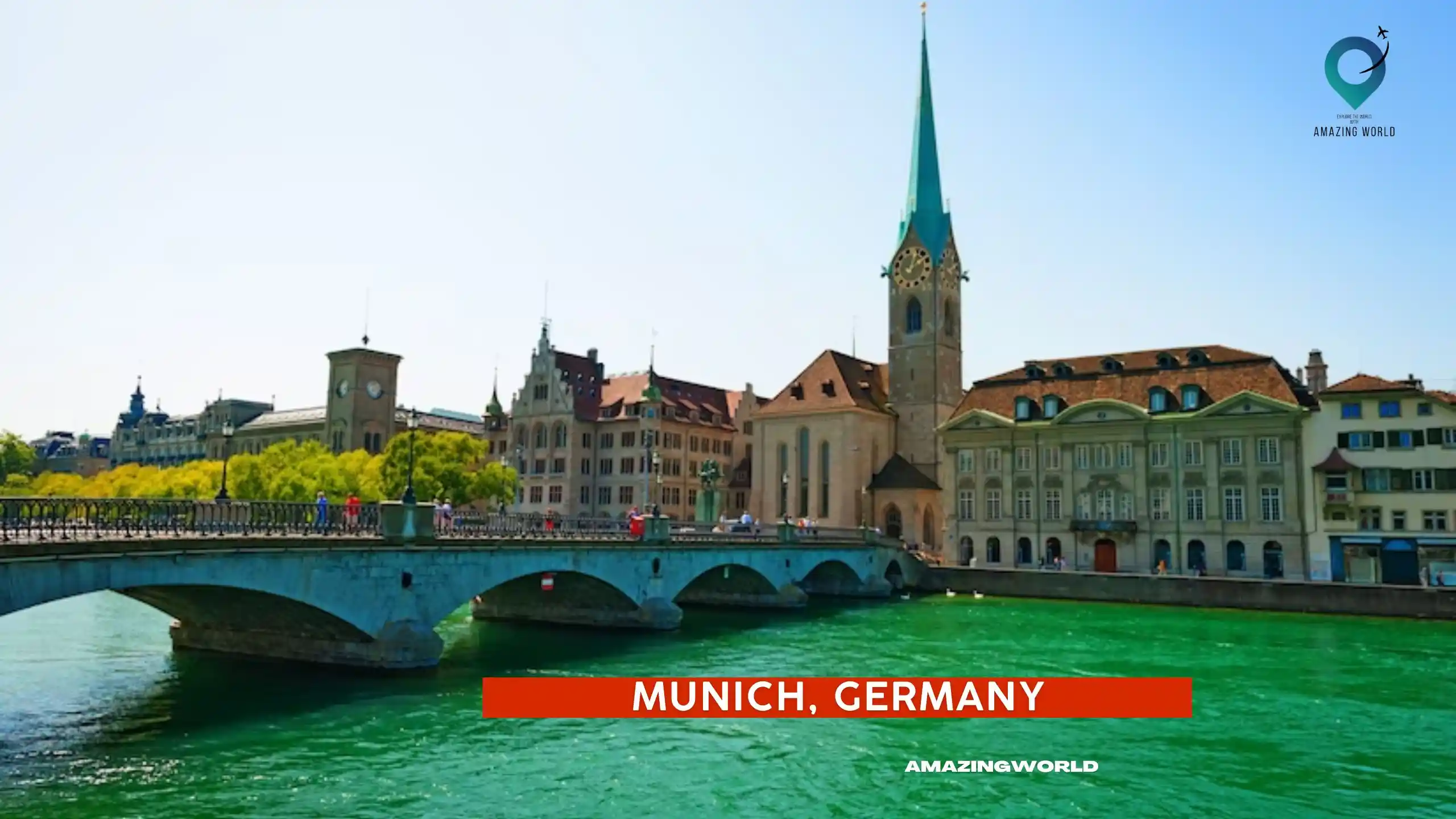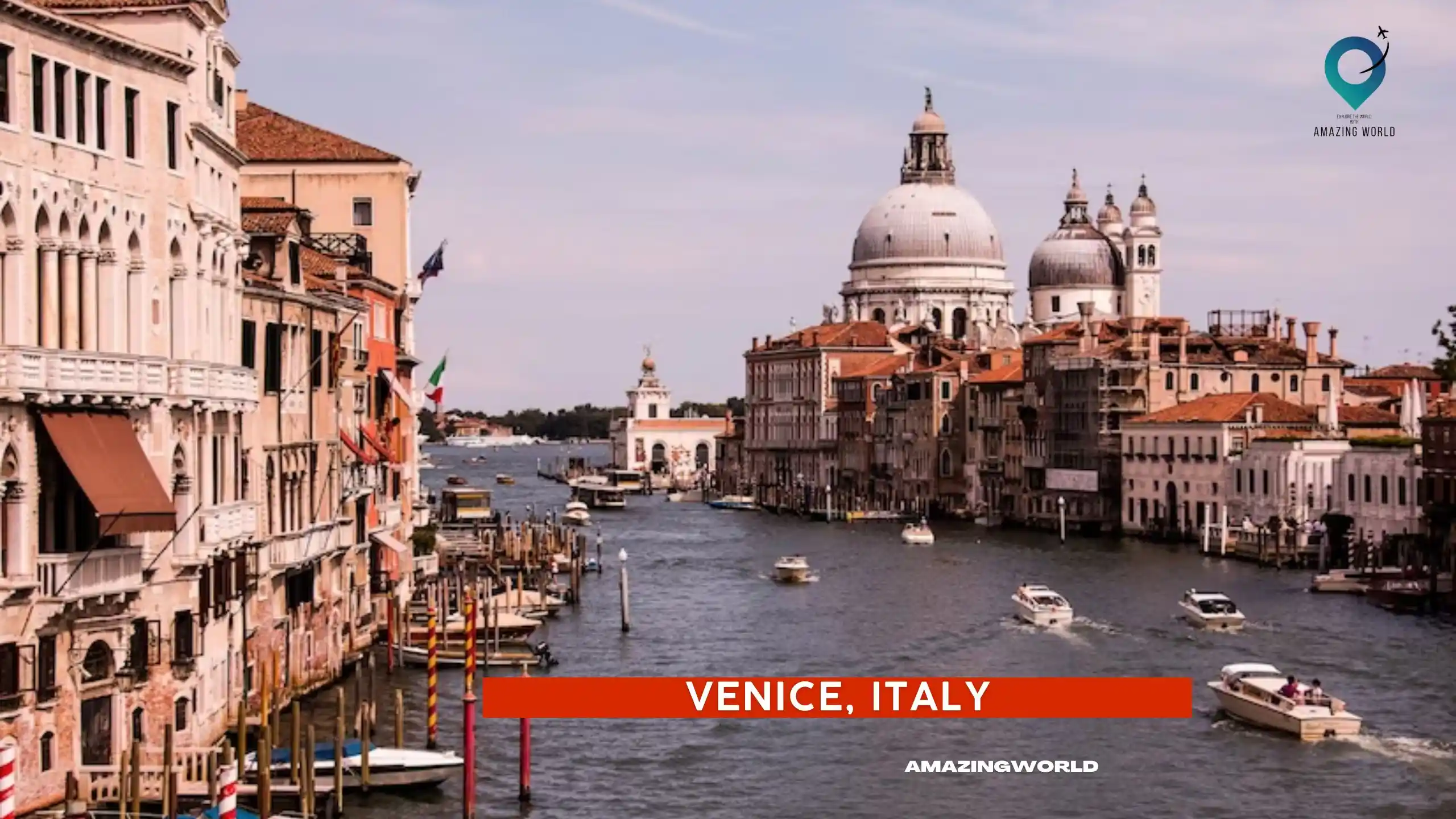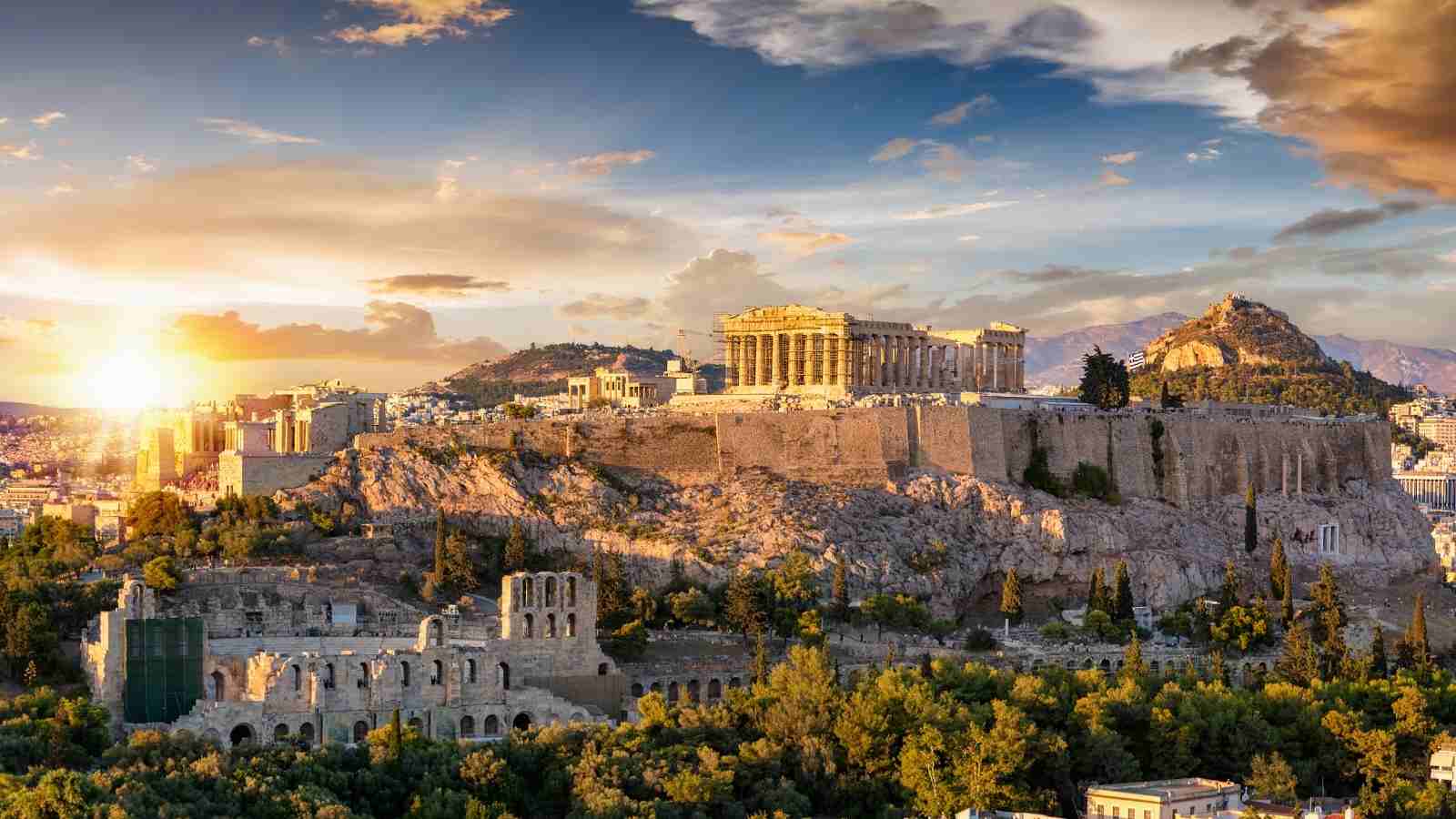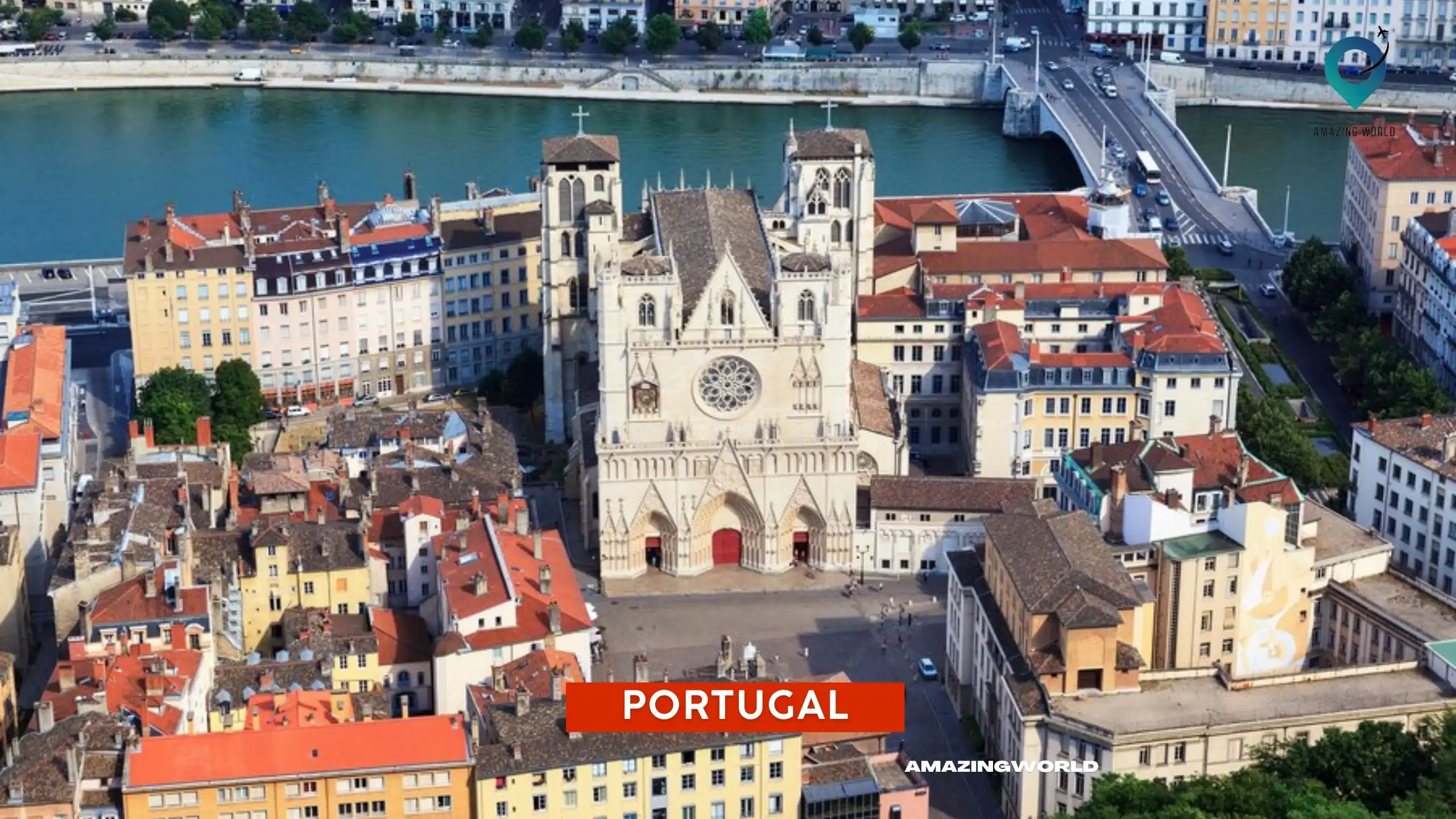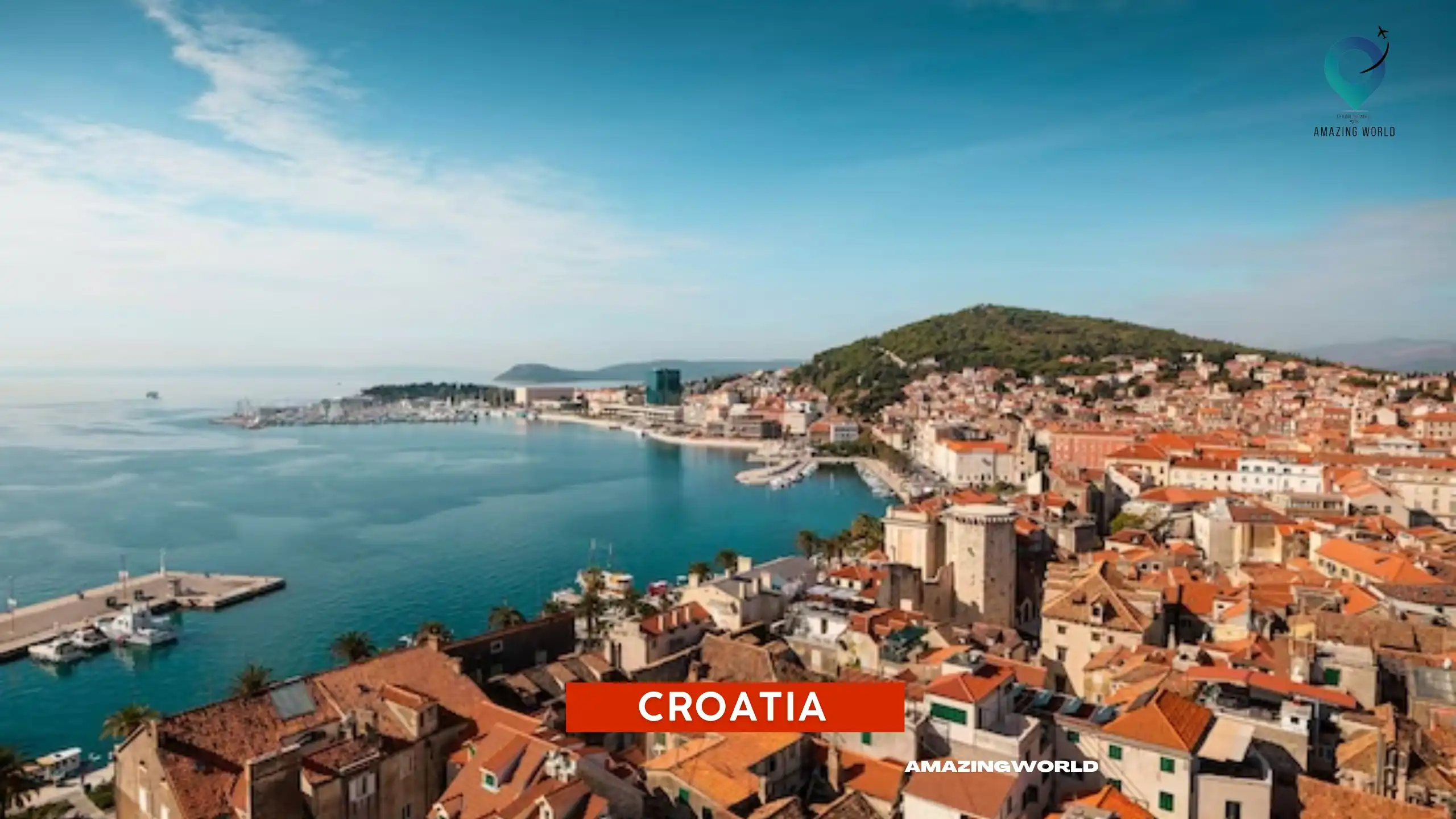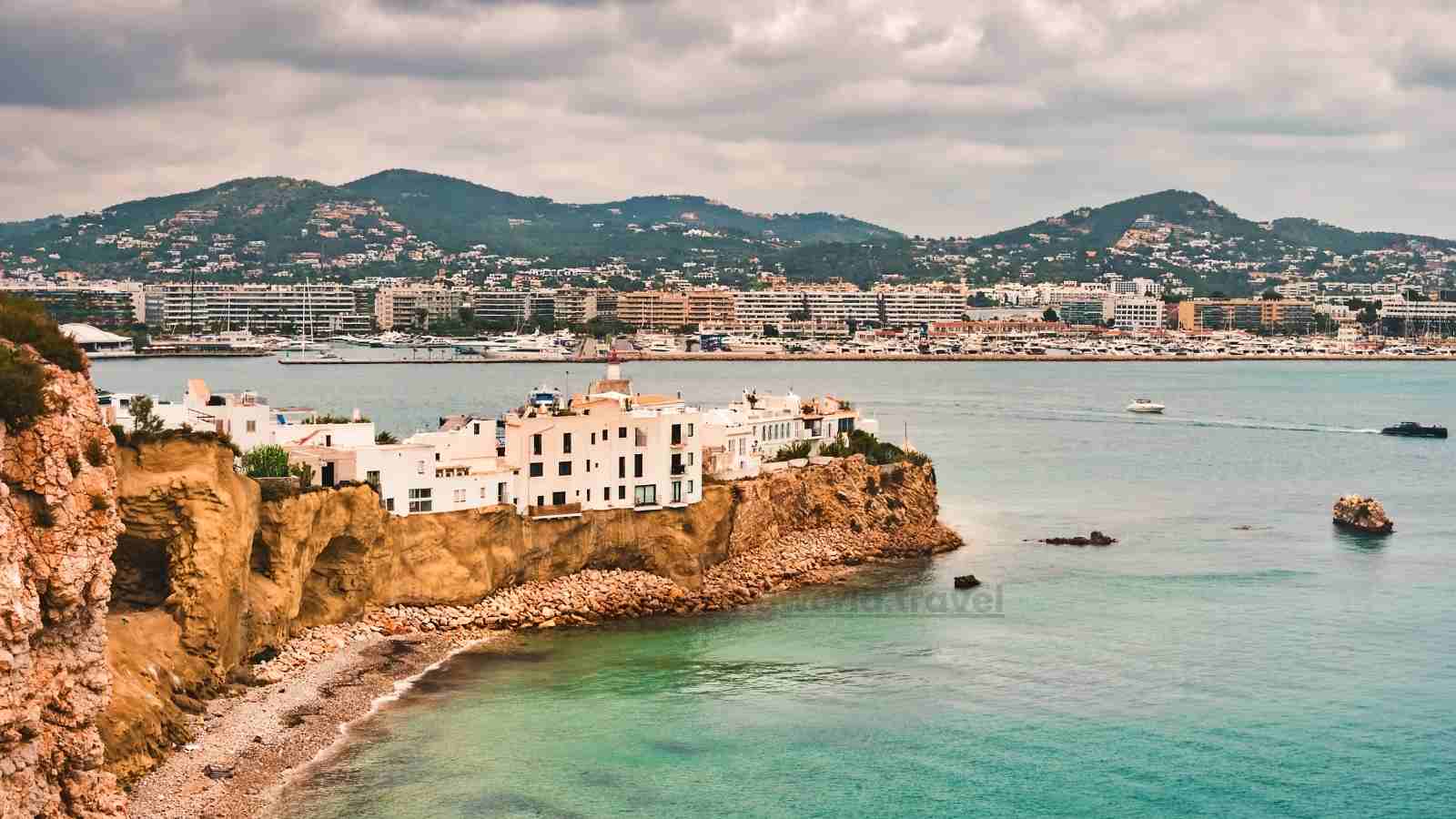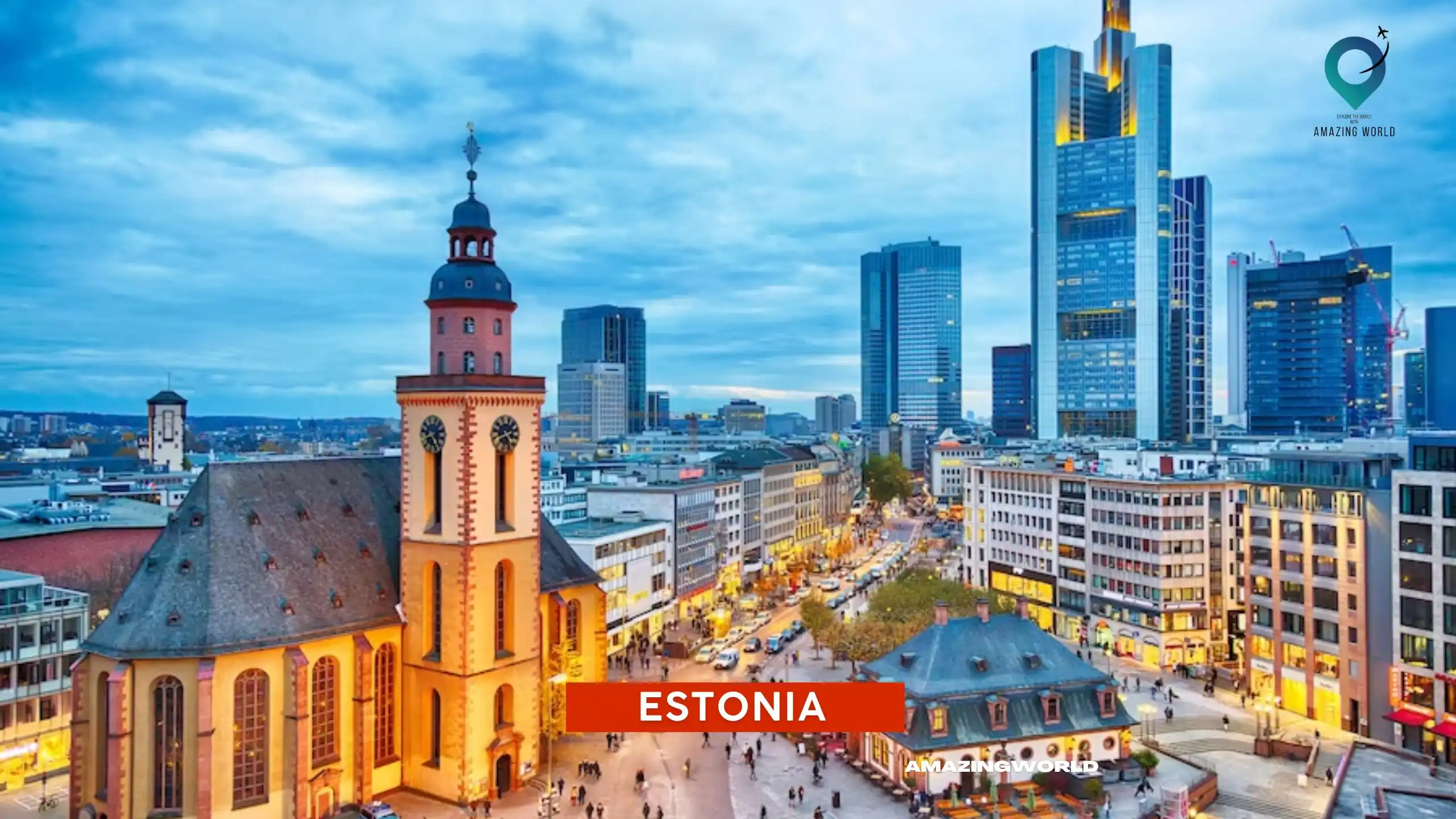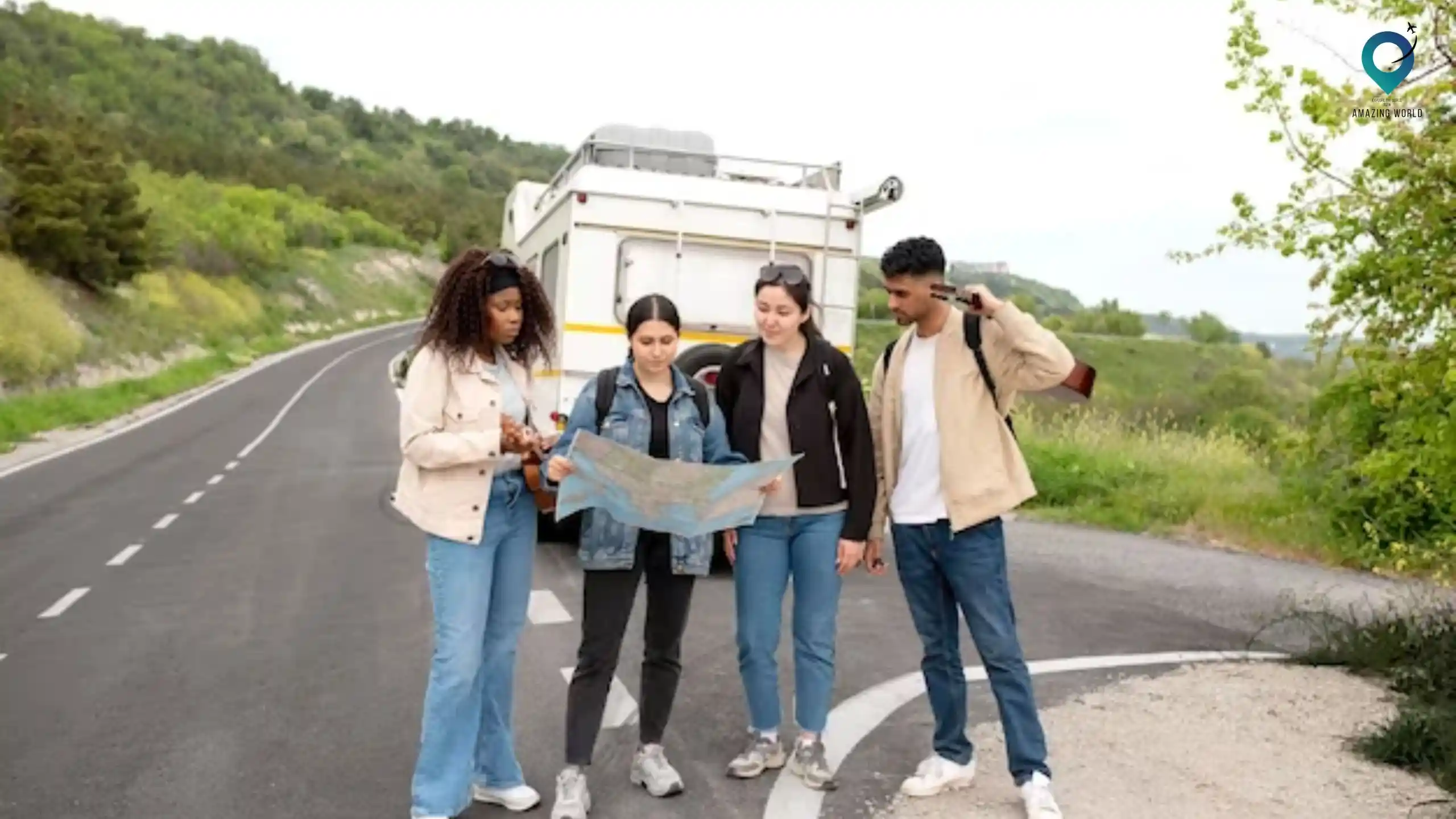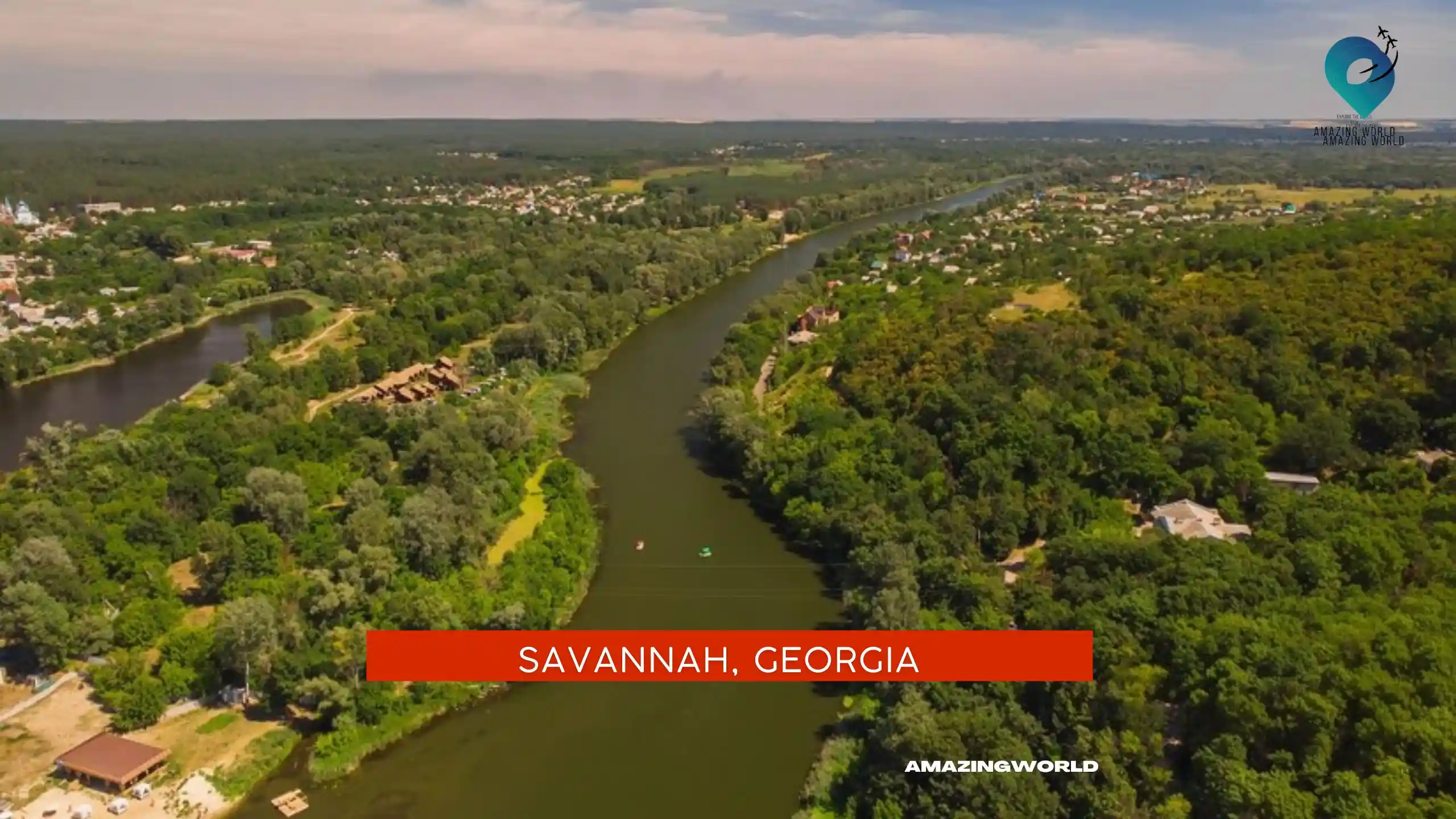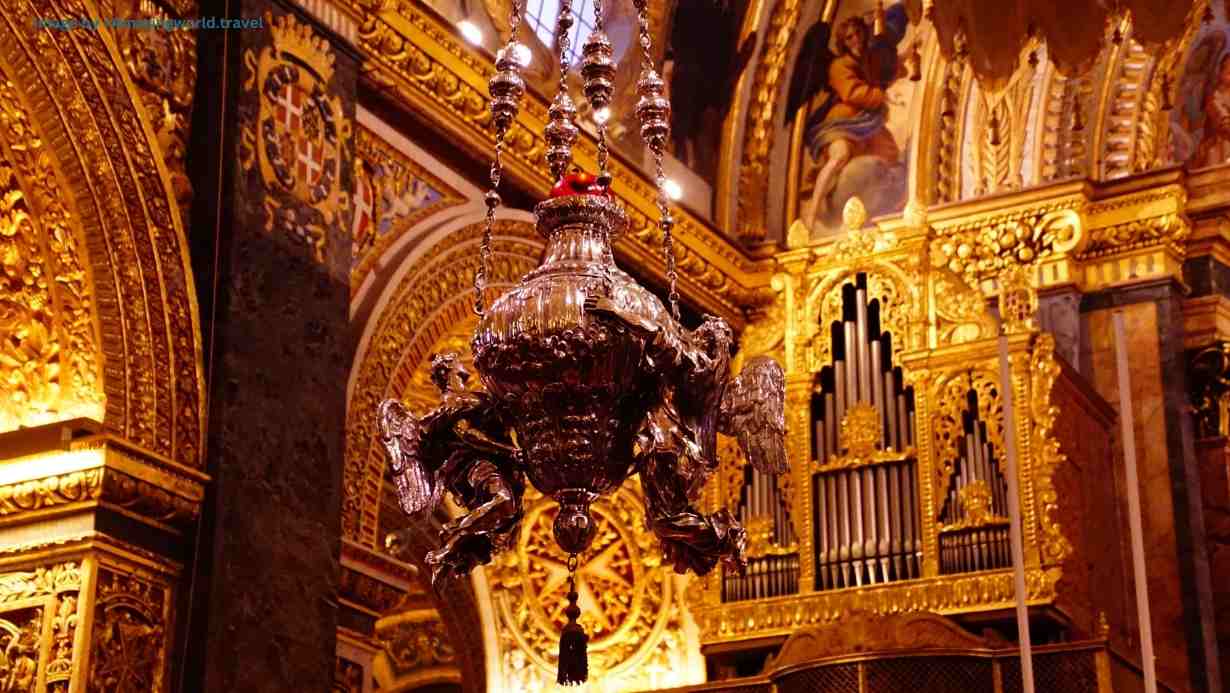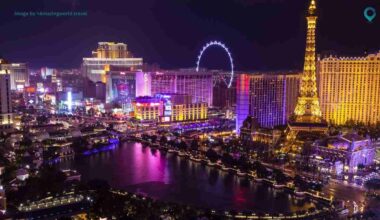The Best Cities to Party in Europe
Are you seeking a tantalizing escape filled with luxurious indulgence and unbridled sensory pleasures? Welcome to a curated list unveiling 25 alluring destinations beckoning those in pursuit of the ultimate hedonistic city breaks in Europe. Embark on a journey where opulence meets cultural immersion, where each cobblestone street whispers tales of history and each bustling market tantalizes the taste buds.
Within these European havens lie treasures that beckon you to explore their hidden gems and vibrant tapestries. From the sultry embrace of thermal baths in Budapest to the tantalizing aroma of freshly baked pizza in Naples, each city invites you to unleash your inner epicurean and delve into a world where art, history, and culinary delights intertwine seamlessly.
So, get ready to immerse yourself in the opulent charms of Europe’s most hedonistic city breaks, where every alleyway holds the promise of an epicurean adventure and every moment invites you to revel in the indulgence that defines the quintessence of these captivating destinations.
This article contains affiliate links, which may earn us revenue
What is mean by Hedonistic City Breaks in Europe
Hedonistic city breaks in Europe refer to vacations or trips taken to cities that prioritize pleasure, luxury, and indulgence. These trips are focused on enjoying oneself by experiencing high-quality food, entertainment, relaxation, and cultural experiences.
Travelers often seek out fine dining, luxurious accommodations, vibrant nightlife, and immersive cultural activities to create a delightful and indulgent getaway in these cities. Essentially, it’s about pampering oneself and relishing the best that a city has to offer in terms of luxurious and pleasurable experiences.
“If you are looking for the best hotel and flight deals for your next vacation, then we recommend booking your bundled flight and hotel through Hotwire.com.“
25 of the Best city breaks in Europe in 2023
1. Berlin, Germany – Culture Hub
Berlin, the capital of Germany, stands as a vibrant cultural hub offering a blend of history, art, and modernity. Renowned for its diverse cultural scene and rich history, Berlin is a dynamic city that attracts millions of visitors each year seeking an immersive experience.
Berlin’s Historical Significance: Berlin bears the marks of its turbulent past, evident in iconic landmarks like the Berlin Wall and the Brandenburg Gate. These monuments serve as poignant reminders of the city’s division during the Cold War era and subsequent reunification, offering visitors a glimpse into significant historical events.
Art and Museums: The city boasts an unparalleled artistic atmosphere with world-class museums and galleries. Institutions like the Pergamon Museum, Altes Museum, and East Side Gallery exhibit an array of historical artifacts, contemporary art, and striking street art, attracting art enthusiasts from across the globe.
Cultural Diversity: Berlin’s cosmopolitan nature is reflected in its diverse neighborhoods. Areas like Kreuzberg and Neukölln pulsate with multiculturalism, offering a mix of cuisines, street markets, and vibrant nightlife scenes. Visitors can savor cuisines from around the world and experience a lively nightlife that extends till the early hours.
Music and Nightlife: The city is renowned for its electrifying nightlife, with numerous bars, clubs, and music venues. From techno clubs in Friedrichshain to jazz bars in Charlottenburg, Berlin offers a diverse range of nightlife experiences catering to various tastes and preferences.
Green Spaces and Parks: Berlin treasures its green spaces despite its urban vibe. The Tiergarten, a vast central park, provides an oasis of tranquility for locals and tourists alike. Additionally, the Mauerpark hosts a bustling flea market and vibrant Sunday karaoke sessions, showcasing the city’s communal spirit.
Berlin, as a culture hub, continuously reinvents itself while honoring its past, making it a must-visit destination for travelers seeking a blend of history, culture, art, and a pulsating urban atmosphere in the heart of Europe in 2023.
2. Amsterdam, Netherlands – Canals, Museums
Canals: Amsterdam is globally recognized for its intricate and picturesque canal system, which forms a fundamental part of the city’s charm. These canals, built in the 17th century, are an engineering marvel and have earned the city the nickname “Venice of the North.” Visitors can explore the city on canal cruises, offering a unique perspective of Amsterdam’s historical buildings, elegant bridges, and enchanting canal-side houses known as “Dutch gables.”
Museums: The city is a treasure trove of art and culture, hosting an array of world-class museums. The Rijksmuseum, renowned for its collection of Dutch Golden Age masterpieces including Rembrandt’s “The Night Watch,” showcases the country’s artistic heritage. Additionally, the Van Gogh Museum exhibits the largest collection of artworks by Vincent van Gogh, providing insight into the artist’s life and evolution of his paintings. Moreover, the Anne Frank House offers a poignant and insightful experience into the life of Anne Frank during World War II.
Cultural Diversity: Amsterdam’s cultural diversity contributes to its vibrancy. The city embraces a tolerant and inclusive atmosphere, evident in its multicultural neighborhoods like Jordaan and De Pijp. These areas are filled with eclectic cafes, restaurants, and markets representing various cuisines and cultures, fostering a welcoming environment for locals and tourists alike.
Bicycle Culture: Amsterdam is famous for its bicycle-friendly infrastructure and biking culture. Cycling is not just a mode of transport but also a way of life in the city. Visitors can rent bikes to explore the city at a leisurely pace, following designated bike lanes and discovering hidden gems off the beaten path.
3. Budapest, Hungary – Thermal Baths
Budapest, often called the “City of Baths,” is celebrated for its abundance of thermal springs and iconic bathhouses. The city’s thermal baths, such as the Széchenyi and Gellért Baths, have been cherished for centuries for their healing properties and relaxation. Visitors can unwind in these mineral-rich thermal waters, which are believed to offer various health benefits, from alleviating stress to improving circulation.
Architectural Splendor: Apart from its thermal baths, Budapest showcases remarkable architecture that reflects its history and grandeur. The Hungarian Parliament Building, Buda Castle, and the Fisherman’s Bastion stand as stunning examples of the city’s architectural heritage, attracting history enthusiasts and admirers of magnificent landmarks.
Danube River and Bridges: The majestic Danube River splits the city into two parts, Buda and Pest, connected by several beautiful bridges. These bridges, including the iconic Chain Bridge, not only serve as practical connections but also offer breathtaking panoramic views of the city’s skyline and the river.
Cultural Scene and Cuisine: Budapest boasts a vibrant cultural scene with numerous theaters, galleries, and events happening throughout the year. Additionally, Hungarian cuisine, known for its flavorful dishes like goulash and chimney cake, offers a delightful culinary experience for visitors exploring the city.
4. Prague, Czech Republic – Gothic Architecture
Prague, known as the “City of a Hundred Spires,” is celebrated for its enchanting Gothic architecture that adorns the cityscape. Visitors are captivated by the intricate details of structures such as the stunning St. Vitus Cathedral within the Prague Castle complex. The Old Town Square, adorned with the Astronomical Clock and Týn Church, exemplifies Prague’s Gothic and medieval charm, transporting visitors to a bygone era.
Historical Significance: Apart from its architectural beauty, Prague is steeped in history. The Charles Bridge, dating back to the 14th century, stands as a historic link between Prague’s Old Town and Lesser Town, adorned with statues and offering picturesque views of the Vltava River. The preserved medieval layout of the city adds to its historical allure, inviting visitors to explore its cobblestone streets and hidden courtyards.
Cultural Vibrancy: Prague isn’t just about its past; it boasts a thriving cultural scene. The city hosts a myriad of music festivals, art galleries, and theaters. Additionally, Prague’s beer culture is renowned, offering opportunities to taste local brews in traditional Czech pubs while enjoying live music or theatrical performances.
Bohemian Atmosphere: Prague’s bohemian ambiance, evident in its bustling markets, street performers, and artisan shops, contributes to its unique character. Visitors can immerse themselves in the city’s creative energy and artistic expression, finding inspiration in its vibrant art scene and creative communities.
Prague’s stunning Gothic architecture, rich history, cultural vibrancy, and Bohemian ambiance create an enchanting and immersive experience, making it a captivating destination for travelers seeking a blend of history, culture, and artistic inspiration in Europe in 2023.
5. Paris, France – Romantic Charm
Romantic Landmarks: Paris, often referred to as the “City of Love,” is synonymous with romanticism. Iconic landmarks like the Eiffel Tower, with its panoramic views of the city, and the picturesque Pont des Arts bridge adorned with “love locks,” epitomize the city’s romantic allure. Couples often relish the opportunity to stroll hand in hand along the Seine River or enjoy a picnic in the scenic Luxembourg Gardens.
Art and Culture: Paris is a global center for art, fashion, and culture. The Louvre Museum houses timeless masterpieces like the Mona Lisa, while the Musée d’Orsay showcases Impressionist treasures. The city’s artistic flair extends to its theaters, galleries, and designer boutiques, offering a cultural feast for visitors.
Charming Neighborhoods and Cuisine: Paris’s diverse neighborhoods, such as Montmartre and Le Marais, exude charm with their cobblestone streets, quaint cafes, and artisanal shops. The city’s culinary scene, featuring delectable pastries, fine dining, and delightful bistros, adds to the overall romantic experience.
Timeless Beauty and Elegance: The city’s elegant architecture, grand boulevards, and carefully manicured parks, including the stunning Tuileries Garden, embody timeless beauty. The ambiance of sidewalk cafes, illuminated landmarks at night, and the city’s effortless elegance contribute to its romantic ambiance.
Paris, with its romantic landmarks, artistic heritage, charming neighborhoods, and timeless elegance, continues to captivate couples and travelers seeking a romantic escape in Europe.
6. Barcelona, Spain – Gaudi’s Art
Barcelona is synonymous with the surreal and awe-inspiring architecture of Antoni Gaudí. The UNESCO-listed Sagrada Família, a masterpiece still under construction, is a testament to Gaudí’s unique style with its intricate facades and towering spires. Park Güell, adorned with vibrant mosaic sculptures and whimsical architecture, showcases Gaudí’s creativity amidst nature.
Artistic Expression and Modernism: Beyond Gaudí’s works, Barcelona exudes a modernist charm, seen in buildings like Casa Batlló and Casa Milà, also known as La Pedrera. These buildings showcase the city’s avant-garde architectural movement of the late 19th and early 20th centuries, contributing to Barcelona’s artistic allure.
Cultural Diversity and Cuisine: Barcelona’s diverse neighborhoods, from the Gothic Quarter to the trendy El Born district, offer a blend of history, culture, and contemporary living. Visitors can savor the city’s gastronomic delights, including traditional Catalan cuisine and vibrant food markets like La Boqueria.
Vibrant Atmosphere and Beaches: Barcelona’s lively atmosphere, bustling streets, and sandy beaches along the Mediterranean coast add to its appeal. The city offers a unique combination of urban exploration and seaside relaxation, inviting visitors to experience its diverse offerings.
7. Lisbon, Portugal – Fado Music, Hills
Lisbon, Portugal’s capital, is renowned for its soul-stirring Fado music. This melancholic yet captivating music genre, characterized by expressive vocals and acoustic guitar melodies, originated in the city’s narrow streets and taverns. Fado houses like Clube de Fado offer authentic performances, allowing visitors to immerse themselves in this poignant and heartfelt musical tradition.
Hills and Panoramic Views: Lisbon’s unique topography, defined by its seven hills, provides panoramic views of the cityscape. Miradouros (viewpoints) such as Miradouro da Senhora do Monte and São Jorge Castle offer breathtaking vistas, making them ideal spots to witness mesmerizing sunsets or simply enjoy the city’s beauty.
Cultural Blend and Heritage: The city’s cultural blend, influenced by its maritime history and Moorish heritage, is evident in its architecture, colorful tiles (azulejos), and historic neighborhoods like Alfama and Bairro Alto. Visitors can explore winding streets, stumble upon charming cafes, and absorb the city’s historic charm.
Gastronomy and Culinary Delights: Lisbon’s culinary scene offers delectable seafood, pastéis de nata (custard tarts), and local wines. Food markets like Mercado da Ribeira showcase a rich tapestry of flavors and aromas, inviting visitors to savor Portuguese gastronomy.
8. Copenhagen, Denmark – Design, Tivoli
Copenhagen is renowned for its cutting-edge design, innovative architecture, and emphasis on sustainable living. The city embraces Scandinavian design aesthetics, evident in its modern buildings, stylish interiors, and commitment to functional yet elegant design in everyday life.
Tivoli Gardens: Tivoli Gardens, one of the world’s oldest amusement parks, is a beloved Copenhagen attraction. This enchanting park combines nostalgic charm with modern attractions, offering a blend of rides, lush gardens, open-air theaters, and dining options, attracting visitors of all ages.
Hygge Lifestyle: The Danish concept of “hygge,” representing coziness, contentment, and wellbeing, is woven into Copenhagen’s fabric. Visitors can experience this warm ambiance in cafes, candlelit spaces, and welcoming neighborhoods, embracing a sense of comfort and relaxation.
Sustainability and Biking Culture: Copenhagen’s commitment to sustainability is evident in its eco-friendly initiatives and extensive network of biking lanes. Exploring the city on a bike allows visitors to enjoy its sights while embracing the city’s biking culture and environmentally conscious lifestyle.
9. Vienna, Austria – Classical Music
Vienna holds an esteemed place in the world of classical music as the birthplace of iconic composers like Mozart, Beethoven, and Strauss. The city’s illustrious musical legacy is celebrated through its world-class concert halls, opera houses, and musical events, offering visitors an opportunity to experience timeless masterpieces performed live.
Cultural Opulence and Palaces: Vienna’s opulent palaces, including Schönbrunn Palace and Belvedere Palace, epitomize the city’s imperial history and grandeur. These architectural marvels, surrounded by sprawling gardens and adorned with exquisite art collections, offer a glimpse into the city’s aristocratic past.
Café Culture and Pastries: The city’s café culture, with its historic coffeehouses like Café Central and Café Sacher, invites visitors to indulge in Viennese coffee specialties and delectable pastries such as Sachertorte and Apfelstrudel, providing a taste of Viennese hospitality and culinary delights.
Artistic Expression and Museums: Vienna’s artistic expression extends beyond music to its vibrant museum scene. Institutions like the Kunsthistorisches Museum and the Albertina house extensive art collections, showcasing works by renowned artists and offering insights into various periods of art history.
10. Madrid, Spain – Vibrant Nightlife
Madrid, the lively Spanish capital, is renowned for its pulsating nightlife that extends into the early hours. The city comes alive after dusk, offering an eclectic mix of bars, clubs, live music venues, and flamenco tablaos, catering to diverse tastes and ensuring an unforgettable night out for visitors.
Cultural Diversity and Tapas Culture: Madrid’s multicultural neighborhoods, such as Malasaña and La Latina, pulsate with energy and offer a blend of art, music, and cuisine. Visitors can partake in the quintessential Spanish tradition of tapas, savoring small plates of delectable dishes while socializing in vibrant tapas bars.
Art and Museums: The city’s art scene, highlighted by museums like the Prado Museum, Reina Sofia Museum, and Thyssen-Bornemisza Museum, showcases an impressive collection of Spanish and international artworks, providing cultural enrichment for art aficionados and enthusiasts.
Historic Landmarks and Parks: Madrid’s historic landmarks, including the Royal Palace and Plaza Mayor, offer glimpses into the city’s royal history and architectural splendor. Additionally, expansive parks like Retiro Park provide green spaces for leisurely strolls and recreational activities.
11. Munich, Germany – Oktoberfest
Munich is globally renowned for hosting Oktoberfest, the world’s largest folk festival and celebration of Bavarian culture. Every year, millions of visitors flock to Munich to indulge in traditional Bavarian beer, cuisine, lively music, and folk dances, creating a jubilant atmosphere.
Bavarian Hospitality and Traditions: During Oktoberfest, Munich showcases its warm Bavarian hospitality. Visitors can experience traditional beer halls like Hofbräuhaus, adorned with vibrant dirndls and lederhosen, immersing themselves in the convivial atmosphere and time-honored customs.
Cultural Festivities and Attractions: Aside from Oktoberfest, Munich offers a wealth of cultural attractions, including iconic landmarks like the Marienplatz and Nymphenburg Palace. The city’s museums, such as the Deutsches Museum, showcase scientific and technological advancements, providing educational and entertaining experiences.
Green Spaces and Recreational Activities: Munich’s expansive parks, including the English Garden, provide tranquil settings for outdoor activities, picnics, and leisurely strolls. The Eisbach River in the English Garden is known for its surfers, adding an unexpected element to the city’s recreational offerings.
12. Venice, Italy – Canals, Gondolas
Venice’s charm lies in its network of picturesque canals that weave through the city, serving as its main thoroughfare. Visitors can explore these enchanting waterways aboard iconic gondolas, offering a romantic and quintessentially Venetian experience.
Architectural Beauty and Landmarks: The city is adorned with architectural wonders such as St. Mark’s Basilica and the Doge’s Palace, showcasing Byzantine and Gothic influences. The Grand Canal, lined with magnificent palaces and historic buildings, offers a stunning backdrop for leisurely boat rides.
Cultural Heritage and Art: Venice’s rich cultural heritage is evident in its art galleries and museums, including the Gallerie dell’Accademia and Peggy Guggenheim Collection, housing masterpieces by renowned artists. The Biennale di Venezia, a prestigious art exhibition, further highlights the city’s artistic significance.
Local Cuisine and Culinary Delights: Venice’s culinary scene features fresh seafood dishes, cicchetti (small snacks), and delectable desserts like tiramisu. Visitors can savor Venetian cuisine in charming trattorias and enjoy the city’s vibrant café culture.
13. Athens, Greece – Ancient History
Athens, often referred to as the cradle of Western civilization, boasts a rich tapestry of ancient historical sites. The Acropolis, crowned by the Parthenon, stands as an enduring symbol of ancient Greek architecture and culture, offering breathtaking views of the city.
Historical Significance and Ruins: The city is steeped in history, with archaeological sites like the Ancient Agora, Temple of Olympian Zeus, and the Theatre of Dionysus showcasing ancient ruins and artifacts, providing insights into Athens’ ancient past.
Cultural Heritage and Museums: Athens houses numerous museums, including the Acropolis Museum and National Archaeological Museum, displaying artifacts and sculptures that narrate Greece’s rich cultural heritage and historical legacy.
Modern Vibrancy and Neighborhoods: Beyond its ancient history, Athens pulsates with modern vibrancy. Neighborhoods like Plaka and Monastiraki offer a blend of traditional charm, labyrinthine streets, vibrant markets, and local tavernas, inviting visitors to experience contemporary Greek life.
14. Porto, Portugal – Port Wine
Porto, situated along the Douro River, is famous for its association with port wine, a fortified wine produced in the nearby Douro Valley. Visitors can delve into the city’s wine culture by exploring historic wine cellars, known as “caves,” where they can taste and learn about the production and aging process of this revered beverage.
Ribeira District and Riverfront: The Ribeira district, a UNESCO World Heritage site, exudes charm with its colorful buildings, cobbled streets, and lively ambiance along the riverfront. Visitors can enjoy picturesque views of the Douro River while strolling along the promenade or savoring local cuisine in waterfront restaurants.
Architectural Splendor and Bridges: Porto showcases a blend of architectural styles, from medieval structures to contemporary designs. The iconic Dom Luís I Bridge, designed by Gustave Eiffel, connects Porto to Vila Nova de Gaia and provides panoramic vistas of the city.
Cultural Heritage and Historic Landmarks: The city’s historic landmarks, including the Sé Cathedral and São Bento Railway Station adorned with magnificent azulejos (traditional Portuguese tiles), offer glimpses into Porto’s cultural heritage and artistic expression.
15. Dubrovnik, Croatia – Old Town Walls
Dubrovnik, known as the “Pearl of the Adriatic,” is famed for its remarkably preserved medieval walls encircling the Old Town. Visitors can walk along these ancient fortifications, offering stunning panoramic views of the city’s red-roofed buildings and the azure Adriatic Sea.
Cultural Heritage and UNESCO Site: The Old Town, a UNESCO World Heritage site, boasts architectural treasures such as the Rector’s Palace and the Franciscan Monastery, showcasing Gothic, Renaissance, and Baroque influences. Dubrovnik’s narrow streets, historic squares, and ancient churches narrate tales of its rich cultural heritage.
Adriatic Coast and Islands: Dubrovnik’s coastal location along the Adriatic Sea invites visitors to explore its pristine beaches, hidden coves, and nearby islands. Boat tours and excursions to islands like Lokrum and Mljet offer opportunities for relaxation and exploration.
Film and Pop Culture: The city gained international fame as a filming location for the popular TV series “Game of Thrones.” Fans can embark on guided tours to discover filming locations and relive moments from the show amidst Dubrovnik’s historic settings.
16. Seville, Spain – Flamenco, Oranges
Flamenco Tradition: Seville, the capital of Andalusia, is synonymous with flamenco, a passionate and expressive art form featuring music, dance, and singing. Visitors can immerse themselves in the vibrant flamenco scene by attending authentic performances in local tablaos, witnessing the emotional intensity and rhythmic flamboyance of this traditional art.
Oranges and Citrus Groves: Seville’s streets are adorned with fragrant orange trees, contributing to the city’s charm and aromatic atmosphere. The city’s association with oranges is evident in its citrus groves and local products, inviting visitors to enjoy fresh orange juice or savor traditional Seville orange marmalade.
Historic Landmarks and Architecture: Seville boasts a rich architectural heritage, including the stunning Alcázar of Seville, a UNESCO World Heritage site with Moorish and Mudejar influences. The awe-inspiring Seville Cathedral, the largest Gothic cathedral in the world, and the iconic Giralda Tower offer architectural splendor and historic significance.
Cultural Festivals and Traditions: The city hosts vibrant festivals like the Feria de Abril, showcasing flamenco performances, colorful parades, and traditional costumes, allowing visitors to experience Seville’s rich cultural heritage and festive spirit.
17. Tallinn, Estonia – Medieval Charm
Tallinn’s Old Town, a UNESCO World Heritage site, exudes medieval charm with its cobblestone streets, well-preserved city walls, and historic buildings. Visitors can wander through the enchanting alleys, discovering medieval churches, merchant houses, and picturesque squares.
Historical Landmarks and Towers: The city showcases iconic landmarks such as Toompea Castle and Alexander Nevsky Cathedral, representing Estonia’s history and architectural heritage. Tallinn’s towers, including Tall Hermann and Kiek in de Kök, offer panoramic views of the city and its surroundings.
Cultural Heritage and Craftsmanship: Tallinn embraces its cultural heritage through museums like the Estonian History Museum and Estonian Maritime Museum, narrating tales of the city’s past. The city’s craftsmanship, particularly in artisanal crafts and medieval markets, reflects its rich historical legacy.
Innovative Technology Hub: Alongside its medieval allure, Tallinn has transformed into a hub for innovative technology and startups, fostering a juxtaposition of ancient history and modern innovation.
18. Lyon, France – Gastronomy, Silk
Lyon holds the esteemed title of being the gastronomic capital of France, renowned for its exquisite culinary delights. Visitors can savor Lyonnais specialties such as quenelles, saucisson, and the iconic Lyonnaise salad in traditional bouchons (local restaurants), experiencing the city’s rich culinary heritage.
Silk Heritage and Traboules: Lyon’s historical significance in the silk trade is evident through its traboules, hidden passageways connecting streets and silk workshops. The city’s silk industry heritage is celebrated in the Maison des Canuts, showcasing silk-making techniques and history.
UNESCO Sites and Architecture: Lyon boasts UNESCO-listed sites like the Historic Site of Lyon, featuring the Vieux Lyon (Old Lyon) district with its Renaissance buildings and traboules, and the Fourvière Hill with the Basilica of Notre-Dame de Fourvière, offering stunning city views.
Cultural Events and Festivals: Lyon hosts vibrant cultural events such as the Fête des Lumières (Festival of Lights) and the Biennale de la Danse, attracting visitors with illuminations, artistic performances, and celebrations of art and culture.
19. Split, Croatia – Diocletian’s Palace
Split is renowned for its UNESCO-listed Diocletian’s Palace, an ancient Roman palace complex built for Emperor Diocletian in the 4th century. Visitors can explore the labyrinthine streets, ancient cellars, and historical landmarks within the palace walls.
Old Town Charm and Waterfront Promenade: The city’s Old Town, nestled within the palace walls, offers a mix of medieval and Renaissance architecture, charming squares, and vibrant markets. The Riva, a waterfront promenade lined with cafes and palm trees, provides picturesque views of the Adriatic Sea.
Cultural Heritage and Museums: Split’s cultural heritage is showcased in museums such as the Split Archaeological Museum and the Croatian Maritime Museum, displaying artifacts and insights into the city’s history, archaeology, and maritime legacy.
Coastal Beauty and Islands: Split serves as a gateway to Croatia’s stunning Dalmatian Coast and nearby islands. Visitors can take day trips to picturesque islands like Hvar and Brač, known for their crystal-clear waters, beautiful beaches, and rich cultural heritage.
20. Cologne, Germany – Cologne Cathedral
Cologne is famous for its awe-inspiring Gothic masterpiece, the Cologne Cathedral (Kölner Dom), a UNESCO World Heritage site. This iconic cathedral, with its intricate architecture and towering spires, stands as a symbol of the city and attracts visitors from around the world.
Rhine River and Bridges: The city’s picturesque location along the Rhine River offers scenic views and opportunities for leisurely cruises. The Hohenzollern Bridge, adorned with love locks, provides stunning vistas of the cathedral and the city skyline.
Cultural Offerings and Museums: Cologne boasts a rich cultural scene with museums like the Museum Ludwig, showcasing modern art, and the Roman-Germanic Museum, displaying artifacts from Roman times. The city hosts various cultural events, including the Cologne Carnival, attracting revelers with colorful parades and festivities.
Historic Old Town and Breweries: The Old Town (Altstadt) features cobblestone streets, traditional pubs (brauhauses), and historic buildings. Visitors can indulge in Kölsch, the local beer, and explore the city’s brewing culture at breweries like Früh am Dom and Sünner im Walfisch.
21. Tbilisi, Georgia – Sulphur Baths
Tbilisi’s distinct charm lies in its historic sulphur bath district, Abanotubani. Visitors can immerse themselves in this unique experience by indulging in relaxing baths fed by natural sulphur springs, known for their therapeutic properties, offering a rejuvenating escape amidst the city’s hustle and bustle.
Old Town Heritage and Narikala Fortress: The city boasts a blend of ancient and modern influences. The Narikala Fortress, overlooking Tbilisi, provides panoramic views of the cityscape and the picturesque Old Town, filled with narrow streets, traditional balconied houses, and cozy cafes.
Cultural Fusion and Cuisine: Tbilisi’s cultural fusion is evident in its diverse culinary scene, offering traditional Georgian dishes like khachapuri (cheese-filled bread) and khinkali (dumplings). Visitors can explore the city’s vibrant markets, sampling local delicacies and experiencing the warmth of Georgian hospitality.
Art and Creative Spaces: The city’s burgeoning art scene features galleries, street art, and creative spaces, allowing visitors to engage with contemporary Georgian art and immerse themselves in the city’s creative energy.
22. Naples, Italy – Pizza, History
Naples is renowned worldwide as the birthplace of pizza. Visitors can savor authentic Neapolitan pizza, characterized by its thin crust, fresh ingredients, and wood-fired ovens, at historic pizzerias like Antica Pizzeria Port’Alba or Sorbillo.
Historical Landmarks and Archaeological Sites: The city boasts a wealth of historical landmarks, including the UNESCO-listed Historic Centre of Naples. Visitors can explore ancient sites like the underground catacombs of San Gennaro and the archaeological treasures of Pompeii and Herculaneum nearby.
Cultural Heritage and Museums: Naples is rich in art and culture, housing museums like the National Archaeological Museum with an impressive collection of Roman artifacts and the Capodimonte Museum featuring Renaissance masterpieces.
Vibrant Atmosphere and Waterfront: Naples’ lively atmosphere, narrow streets filled with colorful shops, and the vibrant waterfront area offer a taste of authentic Italian lifestyle. The views of Mount Vesuvius and the Bay of Naples create a picturesque backdrop for exploration.
23. Riga, Latvia – Art Nouveau
Riga is celebrated for its extensive collection of Art Nouveau architecture, notably found in the city’s historical center. Visitors can embark on architectural walking tours to admire the ornate facades, intricate motifs, and elaborate decorations adorning buildings in the Art Nouveau style.
Historic Old Town and Cultural Heritage: Riga’s UNESCO-listed Old Town showcases a blend of architectural styles, from medieval structures to Art Nouveau buildings. The city’s cultural heritage is further revealed in museums like the Latvian National Museum of Art and the Riga Bourse Art Museum.
Cultural Events and Creative Scene: Riga hosts cultural events and festivals celebrating art, music, and theater, allowing visitors to immerse themselves in the city’s creative energy. The city’s vibrant art scene includes galleries, exhibitions, and creative spaces that showcase Latvian artists’ work.
Parks and Green Spaces: Riga offers picturesque parks and green spaces, such as the Bastejkalna Park and the expansive Mežaparks, providing tranquil settings for leisurely walks, outdoor activities, and cultural events.
24. Basel, Switzerland – Art Museums
Basel is renowned as a cultural epicenter, home to a plethora of world-class art museums and galleries. The city hosts Art Basel, one of the most prestigious international art fairs, attracting art enthusiasts and collectors from around the globe.
Museum District and Collections: Visitors can explore the Museum District, including institutions like the Fondation Beyeler, Kunstmuseum Basel, and Museum Tinguely, housing diverse art collections ranging from classical to contemporary art, sculptures, and multimedia installations.
Historic Old Town and Rhine River: Basel’s charming Old Town, with its medieval buildings, picturesque squares, and the majestic Basel Minster, offers a glimpse into the city’s rich history. The Rhine River adds to the city’s allure, providing scenic views and opportunities for river cruises.
Cultural Events and Festivals: Basel hosts various cultural events and festivals throughout the year, including the Basel Carnival (Basler Fasnacht), an iconic event featuring parades, costumes, and traditional music, showcasing the city’s cultural vibrancy.
25. Valletta, Malta – Baroque Architecture
Valletta, the capital city of Malta, is a treasure trove of Baroque architecture. Visitors can explore the UNESCO-listed city, characterized by stunning palaces, churches adorned with intricate details, and grandiose monuments reflecting the city’s rich Baroque heritage.
Historic Fortifications and Gardens: Valletta is surrounded by impressive fortifications, including the Grand Harbour and the fortified walls of the city. The Upper Barrakka Gardens provide panoramic views of the harbor and offer serene green spaces within the city.
Cultural Heritage and Museums: The city’s cultural richness is evident in museums like the National Museum of Archaeology, which showcases Malta’s prehistoric artifacts, and the Grand Master’s Palace, which exhibits historical artifacts and artworks.
Traditional Festivals and Events: Valletta hosts traditional festivals such as the Feast of St. Paul’s Shipwreck and Carnival, providing visitors with opportunities to immerse themselves in Maltese culture, music, and festivities.
Conclusion.
The European cities outlined above offer a diverse tapestry of cultural, historical, and unique experiences, making them enticing destinations for travelers seeking memorable city breaks in 2023. Each city possesses its own distinct charm, catering to different interests and preferences, from artistic and architectural wonders to culinary delights and historic significance.
From the vibrant energy of Berlin’s cultural hub to the romantic allure of Paris and the artistic legacy of Barcelona’s Gaudi, these cities captivate visitors with their iconic landmarks and cultural heritage. The thermal baths of Budapest, the ancient history of Athens, and the culinary delights of Lyon showcase the depth and variety of experiences awaiting travelers.
Exploring the charming canals of Amsterdam, the medieval Old Towns of Tallinn and Split, and the Baroque architecture of Valletta highlights the rich historical tapestry that Europe offers. Meanwhile, the vibrant festivals of Seville, the cultural fusion of Tbilisi, and the gastronomic delights of Naples showcase the dynamism and cultural richness of these cities.
How much did you like Our detailed The BEST Las Vegas Tours and Things to Do in 2023? Review Also, please share these Blogs with your friends on social media.
Recommended
- Eno River State Park
- Tyger River Park
- Lake Welch Beach
- Little Elm Beach
- Cypress Bend Park
- Top 20 Festivals that Define Brazil
- Things To Do in Iguazu Falls
- The 22+ Most Instagram Travel Destinations
City Breaks in Europe FAQs
Are English speakers widely understood in European cities?
In major tourist areas, English is commonly spoken and understood. However, learning a few basic phrases in the local language can enhance the travel experience and communication with locals.
What are some must-visit attractions in European cities?
Each European city boasts unique attractions. For instance, iconic landmarks like the Eiffel Tower in Paris, the Colosseum in Rome, or the Acropolis in Athens are often must-visit sites. Museums, historic districts, local markets, and cultural events are also highly recommended.
How can I plan an itinerary for a short city break?
It's advisable to prioritize attractions based on personal interests, proximity, and opening hours. Creating a flexible itinerary that includes main attractions, local experiences, and downtime for relaxation or exploration allows for a well-rounded city break experience.
What are some safety tips while traveling in European cities?
Stay aware of your surroundings, safeguard personal belongings in crowded areas, and avoid displaying valuables openly. Also, be cautious of pickpockets, especially in tourist areas. Following local laws and customs and being respectful of cultural differences is essential.

Meet David Hoper, a passionate travel Blog writer with 7+ years of experience in travel content. Through his exemplary storytelling and engaging narratives, he shares his experiences and brings destinations to life. With a keen eye for detail and a love for exploration, he has cultivated a diverse portfolio of travel blogs that inspire and inform readers worldwide.

